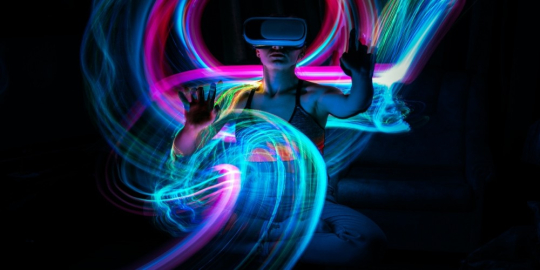
The realm of video games has taken a monumental leap with the introduction of augmented reality (AR) technology. AR games blend digital elements with the real world, crafting engaging experiences that obscure the boundaries between physical and virtual realms. This blend not only enhances gameplay but also invites players into a world where their immediate surroundings become the canvas for breathtaking adventures.
An Introduction to Augmented Reality Gaming
Augmented reality gaming is a technology that merges game visuals and audio with the user's real-world surroundings instantly. Unlike virtual reality (VR), which requires a user to inhabit a completely virtual environment, AR games use the existing environment and create a playing field within it. This means players might be chasing digital creatures through their local park or solving puzzles using landmarks around their city.

The Technology Behind AR Games
The magic of AR games lies in their ability to superimpose digital images onto the real world, which is achieved through a range of technologies. Smartphones and tablets use cameras, sensors, and AR software to display digital content in the physical world, while AR glasses offer a more seamless and integrated experience. Advanced algorithms and processing power are key to understanding the surroundings and placing digital objects correctly in space.
Popular AR Games and Their Impact
Games like Pokémon GO and Harry Potter: Wizards Unite have brought AR gaming into the mainstream, demonstrating its potential to create globally engaging experiences. These games have not only changed the way we play by encouraging physical activity and exploration but have also opened up new possibilities for storytelling and social interaction within a gaming context.

Designing an AR Game: Challenges and Considerations
Creating an AR game presents unique challenges. Developers must carefully design games that interact with the physical environment in meaningful ways. Considerations such as player safety, privacy issues, and the varying quality of players' devices play a significant role in the design process. Additionally, creating an intuitive user interface that merges digital and physical cues is critical for an immersive experience.
Future Trends in AR Gaming
As technology advances, the future of AR gaming looks promising, with potential trends such as improved AR glasses, more sophisticated game mechanics, and deeper integration with social media platforms. These improvements could lead to more seamless and engaging AR experiences, further blurring the line between the physical and digital worlds.
Enhancing the Social Aspect of Gaming Through AR
AR games are inherently social. They encourage players to venture outside, explore their environment, and connect with others. Future AR games could further enhance this aspect by integrating more collaborative features, allowing players to undertake joint quests or compete in real-world locations. This social connectivity is a powerful aspect that significantly enriches the gaming experience.
AR Games and Educational Potential
Beyond entertainment, AR games hold significant potential for education. By gamifying learning and situating it in a real-world context, these games can make educational content more engaging and impactful. Whether it's history, science, or mathematics, AR games can transform mundane academic content into exciting adventures.
The Ethical Considerations of AR Gaming
With the rise of AR gaming, ethical considerations are paramount. Issues surrounding privacy, data collection, and the manipulation of real-world spaces need to be addressed. Ensuring that AR games are developed and played responsibly is crucial to their long-term success and acceptance.
Navigating the Real World with AR
![]()
One of the unique aspects of AR gaming is its ability to intersect with real-world exploration. Players are often required to navigate their physical environment, whether it's finding a virtual item in a local park or visiting a landmark to unlock a game level. This integration encourages physical activity and exploration, enriching the gaming experience with real-world adventures.
Conclusion: The Future of Gaming is Augmented
Augmented reality games represent a significant shift in the gaming industry, offering novel and immersive experiences by blending the digital with the physical. As technological advancements progress, we anticipate augmented reality games to further merge into our daily existence, expanding the limits of traditional gaming while introducing fresh avenues for interaction, narrative, and gameplay. The future of gaming is not just on our screens; it's all around us, waiting to be discovered through augmented reality.